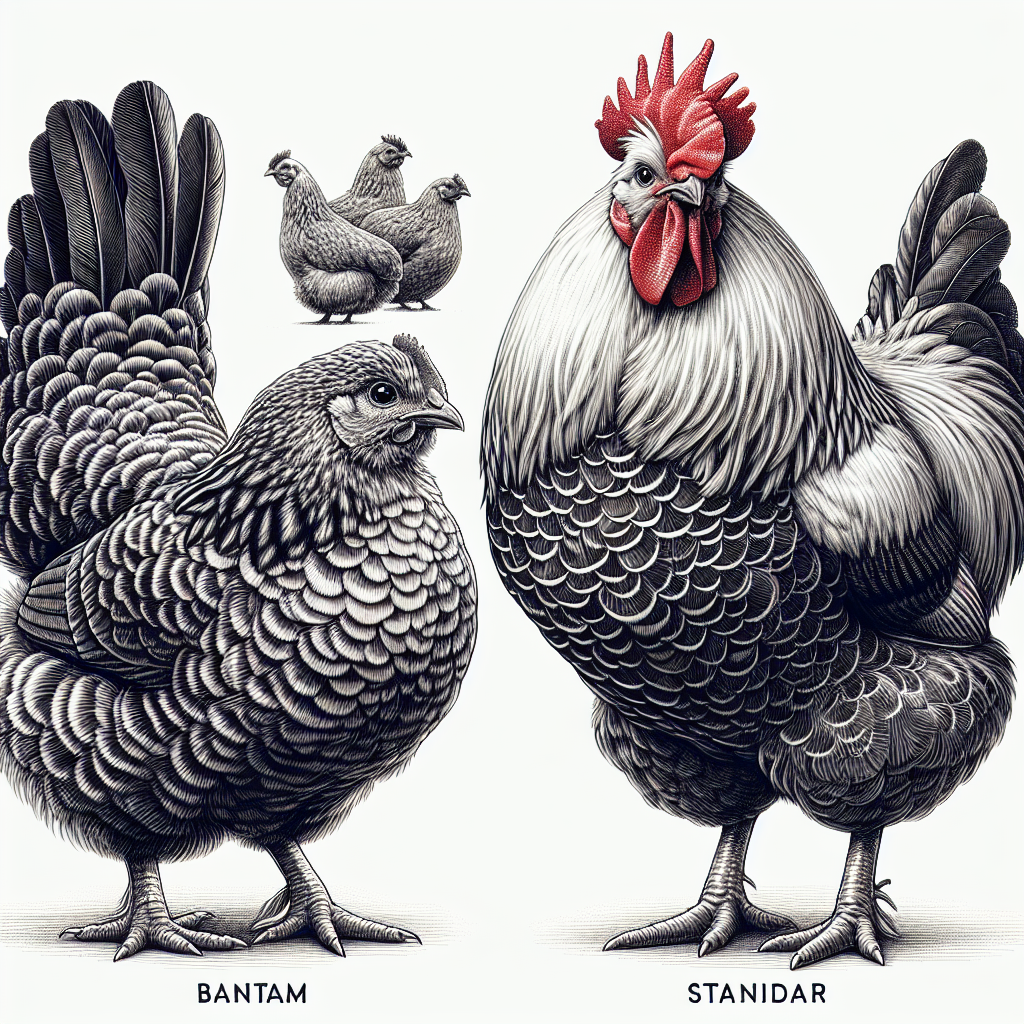Are you a new chick owner looking to promote positive interactions among your flock? Building a harmonious and friendly environment is essential for the overall well-being and happiness of your feathered friends. By creating a warm and inviting space, providing plenty of stimulating activities, and practicing positive reinforcement, you can easily encourage positive interactions among your chicks.
Understanding Chick Behavior
Chicks, like any social animals, have a complex social structure that determines their interactions with each other. Understanding this social structure is crucial for creating a harmonious environment for your chicks to thrive.
Understanding the Social Structure of Chicks
Chickens have a hierarchical social structure known as the pecking order. The pecking order determines the social status of each chick within the flock and affects their interactions. At the top of the pecking order is the dominant chick, who has priority access to resources such as food and water. The lowest-ranking chick may be subjected to pecking and pushing from higher-ranking chicks.
Identifying Signs of Positive Interactions
Positive interactions among chicks can be observed through various behaviors. For example, grooming is a common behavior where one chick combes through the feathers of another, strengthening their social bond. Another positive interaction is mutual preening, where chicks groom each other simultaneously, reaffirming social connections. Chickens also engage in play behavior, such as chasing and hopping, which indicates a positive and healthy social dynamic.
Types of Positive Interactions
Positive interactions among chicks can be categorized into different types. Allopreening refers to the practice of one chick grooming or preening another chick. This behavior helps maintain feathers’ cleanliness and fosters social bonds within the flock. Another type of positive interaction is called affiliative behavior, which includes activities like chasing, playing, or dust bathing together. These behaviors enhance social cohesion and reduce stress levels among chicks.
Creating an Optimal Environment
To encourage positive interactions among chicks, it’s essential to provide them with an optimal environment that meets their basic needs and promotes their well-being.
Providing Adequate Space
Chicks thrive in an environment that allows them enough space for movement and exploration. Overcrowding can lead to stress and aggressive behavior. As a general rule, provide at least 0.5 to 1 square foot of space per chick. This ensures they have enough room to exercise, spread their wings, and engage in social interactions comfortably.
Ensuring Sufficient Feed and Water Resources
Adequate access to food and water is fundamental to maintaining a positive social environment among chicks. Place multiple feed and water stations throughout the brooder area to prevent overcrowding and competition for resources. This ensures that all chicks have equal access to nourishment and minimizes the potential for aggressive behavior.
Offering Enrichment and Stimulation
Chicks, like any living creatures, benefit from mental and physical stimulation. Provide them with various enrichment activities such as perches, dust baths, and safe toys. These stimulate their natural instincts and provide opportunities for exploration, maintaining their overall well-being and reducing boredom or frustration that may lead to negative interactions.
Selecting Compatible Chicks
When introducing new chicks to an existing flock or selecting chicks to raise together, it’s crucial to consider their compatibility to avoid conflicts and promote positive interactions.
Matching Ages and Sizes
Chicks of similar ages and sizes are more likely to get along well and integrate easily. If introducing new chicks to an existing flock, ensure that the age and size differences are minimal to prevent dominance issues. This allows the chicks to establish their pecking order in a more balanced and less stressful manner.
Considering Breed Characteristics
Breed characteristics also play a significant role in determining compatibility among chicks. Different breeds have different temperaments and social behaviors. Some breeds are more docile and friendly, while others may be more assertive or even aggressive. Research the breeds you are considering and choose ones that are known to have compatible traits to foster positive social interactions.
Monitoring Chick Behavior in the Brooder
Observing the behavior of chicks in the brooder is essential to identify any signs of compatibility or issues that may arise. Keep an eye out for excessive pecking, bullying, or other aggressive behaviors. If you notice any concerning interactions, take action promptly to separate the chicks and prevent further escalation.
Introducing Chicks Gradually
Introducing new chicks into an established flock or integrating chicks into a social setting requires a gradual and careful approach to reduce stress and promote positive interactions.
Using a Brooder or Enclosed Space
When introducing new chicks to an existing flock or integrating chicks into a social setting, start by using a separate brooder or enclosed space. This provides a physical barrier that allows the chicks to see and hear each other without direct contact, thereby gradually familiarizing them with one another.
Supervised Socialization Sessions
Once the chicks have spent some time in separate spaces, gradually introduce supervised socialization sessions. Start with short periods and closely monitor the interactions between the chicks. This allows them to establish a hierarchy and develop social bonds under your watchful eye, minimizing the risk of aggression.
Allowing for Individual Space and Time
While encouraging social interactions among chicks is important, it is equally crucial to provide them with individual space and time. Each chick should have access to their own feed and water sources, ensuring fair access and reducing potential conflicts. Additionally, provide hiding spots or separate areas where individual chicks can retreat if they feel overwhelmed, allowing them time to recharge and de-stress.
Managing Stress and Frustration
Stress and frustration can escalate and lead to negative interactions among chicks. To promote positive social behaviors, it’s essential to manage their environment and minimize potential stressors.
Avoiding Overcrowding
Overcrowding is a major stressor for chicks and can lead to aggressive behavior. Ensure that the brooder or coop has adequate space to accommodate the number of chicks you have. Avoid overcrowding by providing enough space per chick and monitoring their behavior for signs of stress or discomfort.
Minimizing Noise and Disturbances
Chicks are sensitive to loud noises and disturbances, which can cause stress and disrupt their social interactions. Keep the brooder or coop in a quiet area, away from loud machinery or high-traffic areas. Minimize any sudden or jarring noises to create a calm and peaceful environment where positive social behaviors can flourish.
Detecting Signs of Aggression or Bullying
Early detection of aggression or bullying among chicks is crucial to prevent escalation and ensure the well-being of all flock members. Observe the chicks closely and watch for signs such as excessive pecking, feather pulling, or one chick consistently dominating others. If aggression is observed, separate the aggressor and provide necessary interventions to prevent harm to the other chicks.
Promoting Positive Social Behaviors
Positive social behaviors among chicks can be encouraged through various strategies that foster socialization and establish a healthy pecking order.
Providing Socialization Opportunities
Regular socialization sessions between chicks allow them to establish social bonds and develop a balanced pecking order. Encourage supervised interactions, such as supervised free-range time or communal dust bathing. These opportunities help chicks communicate, play, and engage in natural behaviors, strengthening social ties.
Encouraging Pecking Order Establishment
The establishment of a pecking order is a natural process among chicks, and it helps maintain order and minimize conflicts. Allow the chicks to establish their own hierarchy through interactions, avoiding unnecessary intervention unless the behavior becomes excessively aggressive or harmful. This allows them to develop a natural balance and understanding within the flock.
Supervising and Intervening if Necessary
While promoting a self-regulated pecking order, it’s important to monitor the interactions between chicks and intervene if necessary. If aggression or bullying becomes excessive, swiftly separate the involved chicks to prevent harm. Provide distractions and enrichment activities to redirect their focus to positive behaviors and help establish a more harmonious social dynamic.
Ensuring Adequate Resources
To maintain a positive social environment, it is essential to provide chicks with sufficient resources that meet their nutritional and behavioral needs.
Multiple Feed/Water Stations
Having multiple feed and water stations is essential to prevent resource guarding and aggressive behavior. Ensure that each chick has easy access to food and water without being overwhelmed or bullied by other flock members. This ensures fairness and reduces any potential stress related to resource competition.
Treats and Supplementary Nutrition
Offering treats and supplementary nutrition not only provides additional nourishment but also creates positive associations and encourages social interactions. Scatter treats or offer them in a communal feeder to promote cooperative feeding and reduce competition.
Sufficient Nesting Areas
Providing sufficient nesting areas is crucial for maintaining a harmonious environment. Chicks need designated spaces to lay their eggs and seek privacy when resting. Ensure there are enough nesting boxes or secluded areas where each chick can comfortably lay and rest without disturbance, promoting a sense of security within the flock.
Maintaining a Clean and Healthy Environment
A clean and healthy environment is vital to support positive social behaviors and prevent the spread of disease among chicks.
Regular Cleaning and Sanitization
Regularly clean and sanitize the brooder or coop to remove droppings, dust, and debris that may harbor bacteria or parasites. A clean environment reduces the risk of diseases and also helps chicks feel more comfortable and secure, promoting positive social interactions.
Preventing the Spread of Disease
Implement biosecurity measures to prevent the introduction and spread of diseases within your flock. Quarantine new chicks before introducing them to the main flock, and maintain good hygiene practices, such as handwashing before and after handling chicks. This reduces the risk of contagious diseases and maintains the overall health and well-being of the flock.
Dealing with Injured or Sick Chicks
Promptly address any injuries or illnesses among chicks to prevent further stress or aggression within the flock. Isolate the affected chick, provide necessary medical care, and closely monitor their recovery. This ensures their well-being and minimizes the potential for negative interactions resulting from vulnerability or pain.
Monitoring and Intervention
Monitoring the interactions among chicks is crucial for maintaining a positive social environment. By observing their behaviors, you can identify potential issues early on and intervene when necessary.
Observing Chicks’ Interactions
Regularly observe the interactions between chicks, especially during socialization sessions. Look for signs of cooperation, positive social behaviors, and any concerning or aggressive interactions. Identify any patterns or changes in behavior that may indicate a shift in the flock dynamics.
Recognizing Signs of Stress or Aggression
It’s important to be able to recognize signs of stress or aggression in chicks. These signs may include excessive feather pecking, feather loss, aggression towards other chicks, or withdrawal from social interactions. Prompt recognition allows for timely intervention and ensures the well-being of the affected chicks and the overall flock harmony.
Implementing Corrective Measures
If negative or aggressive behaviors are observed, it’s crucial to implement corrective measures to prevent them from escalating. This may involve separating the involved chicks temporarily, providing extra enrichment activities, or addressing any underlying factors that may be contributing to the negative behaviors. Timely intervention helps redirect their focus to positive interactions and fosters a healthier social environment.
Continued Socialization
Socialization should not be limited to the early stages of a chick’s life. Continued socialization and integration with older chickens play a vital role in maintaining positive interactions and flock dynamics.
Gradual Integration with Older Chickens
When the chicks are old enough, consider introducing them gradually to older chickens. This allows them to form mixed-age flocks, promoting positive socialization and transferring learned behaviors. Monitor the interactions closely during the integration phase and provide separate resources to ease the adjustment process.
Providing Roaming Space and Outdoor Access
Offering your chickens the opportunity to roam and access the outdoors is beneficial for their well-being and social interactions. Allow them supervised free-range time in a secure outdoor area where they can explore, forage, and engage in natural behaviors. This encourages positive group dynamics and reinforces their social bonds.
Sustaining Positive Interactions Over Time
Maintaining a positive social environment requires ongoing attention and care. Ensure that your flock’s needs for space, resources, and social interactions are consistently met. Regularly monitor their interactions, provide enrichment activities, and act promptly if any negative behaviors arise. With consistent effort, you can sustain positive interactions among your chicks and create a harmonious flock.




